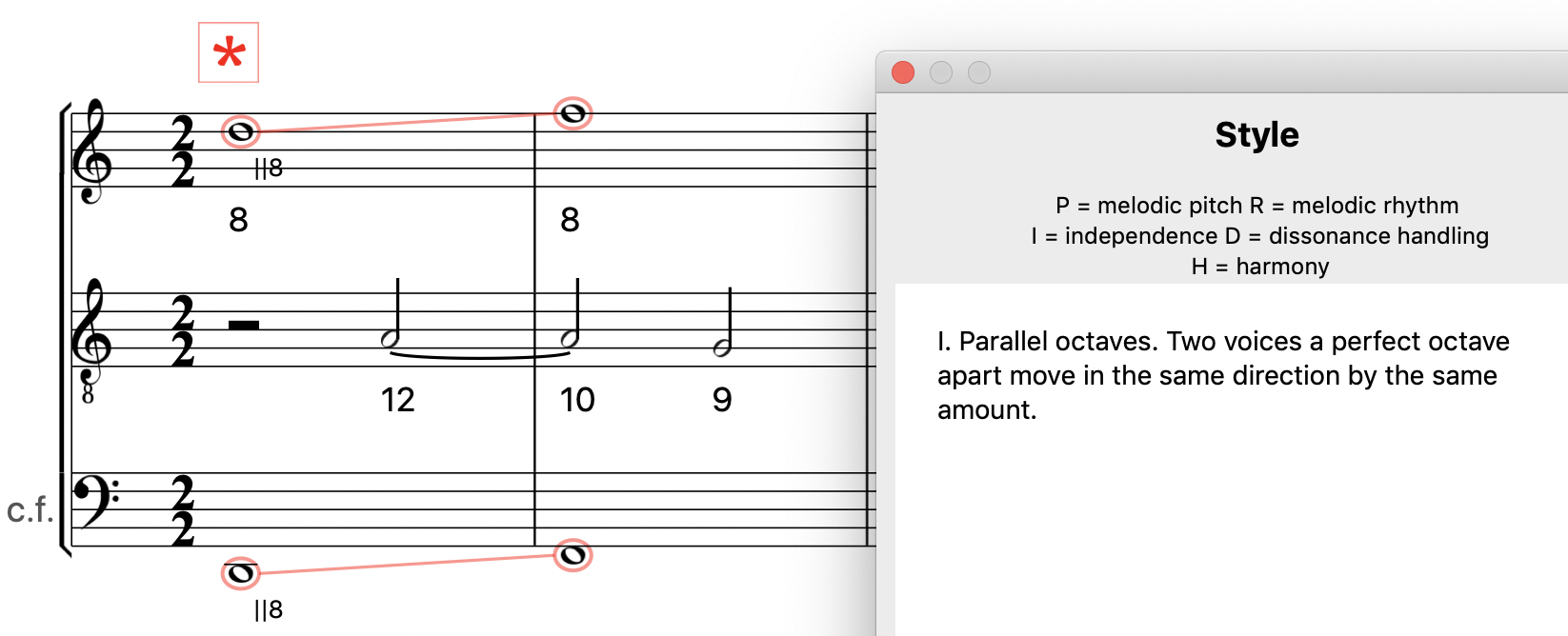|
The art of writing melodies that sound well together is known as counterpoint. For hundreds of years this art has been taught to composers through a step-by-step process: the student begins with the simplest kind of countermelody - one that has exactly the same rhythm as the original. When that is mastered the student moves on to writing two notes for each note of the original, then gradually more complicated patterns. This is called "Species Counterpoint" and was the study method of many of history's greatest composers. This study did, however, require a highly skilled teacher who could examine the student's writing and mark where it departed from the various "rules" that help it to sound well. Counterpointer™ is the first software to offer instant evaluation of all of the five species as well as free counterpoint, and can serve both as a self-contained introduction to counterpoint and as an aid in classrom study. Rather than waiting for your next meeting with your professor, you can push the "evaluate" button to instantly see comments on what you've done. Then make changes as needed and click the button again. Of course you are also able to hear what you've written and to save it as a music file - when you reach the point of seeing no error marks you'll generally find the music actually does sound better! You can even customize the many rules used for evaluation, and if you are an instructor you can post that customized version for use by your students. After you have mastered the species you can try the Palestrina style exercises with starting melodies invented by Counterpointer, or the Bach tonal counterpoint exercises based on excerpts from Bach chorales. In the Free Counterpoint activities you can do whatever you like, including opening files from our online library and letting Counterpointer examine them - it can be interesting to see where a famous composer breaks the "rules," too.
Includes notation tools for entering and saving music and more than 150 user-controllable style rules

See YouTube video examples of how music is edited in Counterpointer.
Species counterpoint exercises based on a cantus firmus invented by the computer - always new.
Species counterpoint exercises based on the Fux examples (2, 3, and 4 parts)
Helpful feedback identifies style departures - you can re-evaluate repeatedly until you have a perfect score.

Exercises in realizing Roman numerals in 4-part vocal harmony (harmony based on Bach examples)
Exercises in realizing figured bass in 4-part vocal harmony (harmony and bass from Bach examples)
Free counterpoint in 2-8 voices using your own choice of style rules
An onscreen manual offering a basic introduction to counterpoint and explanations of each rule
Each staff can use any of the 127 MIDI instrument sounds.
Compositions can be saved, heard, printed, and exported as MIDI files or MusicXML files.
Counterpointer's student file is the same type as those used by Practica Musica: if you are in a class using Webstudents online reporting your progress can be reported to an instructor the same way as Practica Musica.
As with Practica Musica 7 and Songworks 4, notation is highly adjustable and can be edited either in left-right (panorama) or page view. Drag note stems to adjust flags and beams, drag bar lines to compress or expand measures (you are not required to have a fixed number of measures per line). Items will be positioned proportionally in each measure even when you shrink or expand a measure. Drag notes up or down to change their pitch, drag them left or right to fine-tune their positions, and drag control boxes to change the curve of a slur or the angle of a bracket.
Hear your work at either standard A440 pitch or A415 (A415 is often used by early music performers)
Windows and Mac versions are file-compatible (you can use the same music files with either).
Don't miss our free online counterpoint study!
And check the customer testimonials
|

